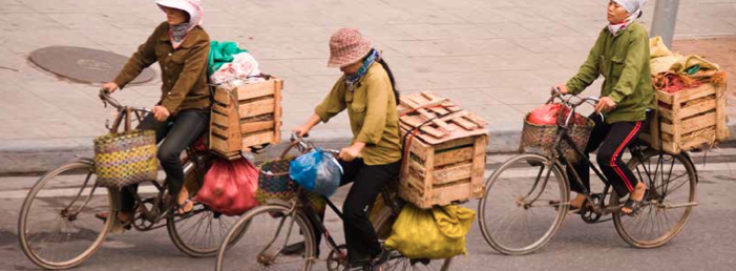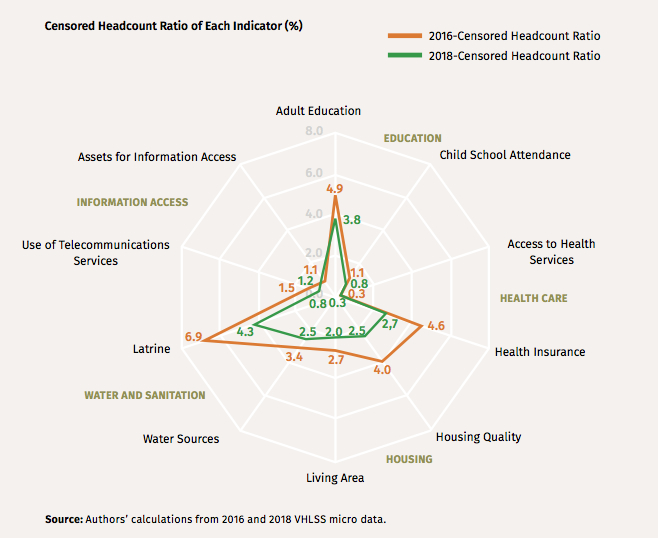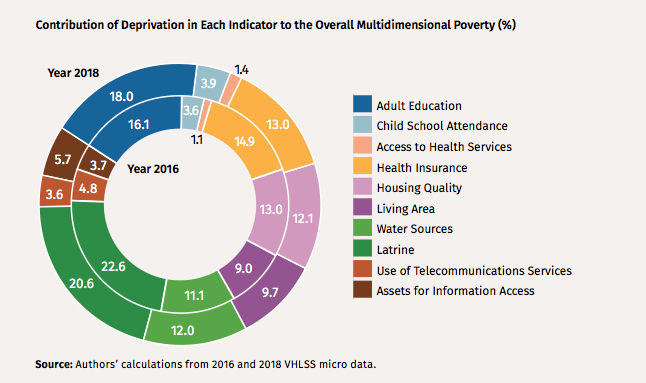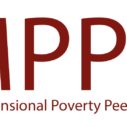
Search
Multidimensional Poverty in Viet Nam: Sustainable Poverty Reduction 2016–2020

In Viet Nam, the Government publishes national targets for poverty reduction every five years and updates poverty lines to measure changes in poverty within those five-year periods. Up to and including 2015, Viet Nam only used an income-based poverty measure. The poverty line was set at the amount of money per month sufficient for a 2100 Kcal/person/day diet as well as essential non-food spending. Using the Poverty Census, the Ministry of Labour, Invalids and Social Affairs (MOLISA) then identified and made a commune-level list of poor households based on this poverty line, and this list was reviewed and updated annually. The General Statistics Office (GSO) then conducted the Viet Nam Household Living Standards Survey (VHLSS) and disseminated its findings on income levels, poverty rates, and the GINI inequality coefficient.
The process of research and the application of a multidimensional poverty measurement methodology
Since 2006, UNICEF and UNDP have been suggesting additional methods for measuring multidimensional poverty to complement traditional monetary measures poverty measurement using Multiple Overlapping Deprivation Analysis (MODA) and the Alkire-Foster method, which have subsequently been explored through quantitative studies. As a result, researchers and policymakers in Viet Nam have recognized the link between the government’s goal of sustainable poverty reduction and multidimensional poverty measurement.
Prior to the official adoption of this new multidimensional poverty approach, the Government of Viet Nam spent two years researching and developing the measure with the active support of UNDP, OPHI and the close cooperation of specialists from the General Statistics Office (GSO), the Ministry of Planning and Investment, the Labour Science Institute (ILSSA), MOLISA, the Academy of Social Sciences (VASS), and the National Economics University.
Between 2013 and 2015, this team of experts carried out several activities in the process of discussing a multidimensional approach for poverty measurement that included (i) initial studies on multidimensional poverty measurement concepts and methodologies, proposing feasible measures and providing initial information on multidimensional poverty in Viet Nam, (ii) training and communication about multidimensional poverty, (iii) technical assistance to the government’s Research Group and the Secretariat of the General Project on Multidimensional Poverty, (iv) designing tools and procedures to identify poor households, and (v) consultation and testing of the procedures and the tools at the commune/ward levels.
In September 2015, the Government of Viet Nam issued a decision to publish poverty lines for the 2016–2020 period using the multidimensional poverty approach (Decision No.59/2015/QD-TTg). The multidimensional poverty measure is used to monitor and evaluate social protection programs, as well as to identify beneficiaries of these programs. The poverty line for the 2016–2020 period combines income poverty measurement and a multidimensional poverty measure based on the Alkire-Foster method.
Multidimensional poverty is measured through five basic social services (or five dimensions): health-care, education, housing, water and sanitation, and information access. Each dimension has two indicators, which are equally weighted. A household is considered multidimensionally poor if it is deprived in at least three indicators (i.e. the multidimensional cut-off is 30%).
According to Decision mentioned previously, MOLISA was responsible using this multidimensional approach to identify a list of poor households at the commune level. In turn, the GSO was responsible for publishing the poverty rate, the proportion of households deprived of basic social services, and the multidimensional poverty index (MPI) based on the results of the VHLSS.
Key Finding
Multidimensional poverty tends to decrease for all cut-offs
The data analysis results of the VHLSS show that the household multidimensional poverty rate (H) has decreased in the period 2016–2018. This finding is robust to any value of the poverty cut-off.
The national multidimensional poverty rate (H) (according to the official poverty threshold – deprivation in three or more indicators or k = 30%) fell from 8.8% in 2016 (equivalent to about 2.2 million poor households) to 6.1% in 2018 (equivalent to about 1.6 million poor households).
When the multidimensional poverty cut-offs were set between five to eight indicators (or k from 50% to 80%), the proportion of poor households was below 1%. The results of the analysis using VHLSS revealed that no households were multidimensionally poor when a deprivation threshold of nine or more indica- tors (k=90%) was used.
The rate of poor households deprived in each indicator tends to decrease in almost all indicators from 2016 to 2018
The proportion of households who are multidimensionally poor and deprived in each of the indicators included in Viet Nam’s national MPI (MPI-VN) has decreased for almost all indicators. By 2018, all deprivations were lower than 5%. The highest deprivation rate belongs to the latrine indicator at 4.3%; the four indicators with the lowest deprivation rates, ranging from 0.3% to 1.2%, include Child School Attendance, access to health services, use of telecommunications Services, and assets for information access.
Multidimensional poverty indices are significantly different between geographic regions
The MPI-VN decreased from 0.031 in 2016 to 0.021 in 2018. However, there are clear regional dis- parities within the country. MPI-VN varies among geographic regions and shows a downward trend over time in almost all regions except the South East region.
The ranking order of regions by MPI-VN did not change between 2016 and 2018. The two regions with the highest MPI-VN and the fastest reduction are the Central Highlands region (down from 0.071 to 0.047) and the South East region (down from 0.061 to 0.038). The Red River Delta is the region with the lowest MPI-VN; in 2018, its MPI was only 0.002.
Change in the contribution of indicators to the overall MPI-VN
The contribution of each indicator to the overall MPI-VN changes over time. The indicators for child school attendance, access to health services, use of telecommunications services, and assets for information access have the lowest levels of contribution to the MPI-VN; each indicator contributes from 3% to 6%. The contribution of the latrine indicator to over- all MPI-VN has decreased over time but still has the highest contribution (22.6% in 2016 and 20.6% in 2018). The second highest contributor is deprivation in adult education, which increased from 16.1% in 2016 to 18.0% in 2018.
Zooming out from the indicator level, the dimension with the largest contribution to the MPI-VN was water and sanitation, which contributes around 33%. By contrast, the dimension assets for information access has the lowest contribution to overall MPI-VN (less than 10%).
Policies to support poverty reduction, 2016–2020
In 2016, the Government of Viet Nam approved the ‘National Target Programme on Sustainable Poverty Reduction 2016–2020’ with the following objectives: implementing sustainable poverty reduction goals; limiting regression into poverty; contributing to the goal of economic growth, social security, improvement in living standards and people’s income, especially in poor areas; creating favourable conditions for the poor and improving the access of poor households to basic social services (healthcare, education, housing, water and sanitation, information access).
In the implementation of the plans and goals of the sustainable poverty reduction programme from 2016 to 2018, ministries, agencies, and provinces have developed specific plans and implemented regular policies offering direct support to poor and vulnerable households, as well as policies for regional development and other critical focus areas.
Specifically:
Policies providing direct support to poor and vulnerable households:
✓ Policies to support the issuance of health insurance cards to the poor;
✓ Policies for exemption from or reduction of tuition fees and support for schooling expenses for poor students;
✓ Preferential credit policies for the poor, nearly poor, and social policy beneficiaries;
✓ Policies to help with the electricity expenses of poor households and social policy beneficiaries;
✓ Policies to assist ethnic minorities living in poor areas with purchasing raw materials and supplies for production and people’s livelihoods ̧ and,
✓ Policies to support the construction of safe and stable houses.
Policies and projects to support regional development, and areas for critical focus:
✓ Policies to support infrastructure investment in poor districts and communes on coastal promontories and islands facing extreme difficulty with low living standards, poor infrastructure, and which are affected by climate change;
✓ Policies to support the development of production, livelihood diversification and the replication of poverty reduction models in poor districts and communes on coastal promontories and islands facing extreme difficulty;
✓ The project on information access deprivation reduction.
Conclusions
Multidimensional poverty measurement has been implemented in Viet Nam for three years with results showing its feasibility, usefulness and effectiveness in creating and carrying out poverty reduction and social security policies. The multidimensional poverty concept has spread widely across the nation in recent years. It has been transmitted from the researchers to the policymakers, to authorities at all levels, and then to households. The policy system for 2016–2020 has been carried over from the previous five-year period with appropriate amendments to ensure the comprehensive coverage of multidimensionally poor households. The percentage of multidimensionally poor households receiving benefits from at least one of the poverty reduction and social security programs has increased from 49.6% (in 2016) to 53.3% (in 2018).
The MPI and its related indicators in Viet Nam have showed reductions and are currently at very low levels. Moreover, some important dimensions and indicators – such as nutritional status, employment, and social insurance – have not been included in the multidimensional poverty measure for the period 2016–2020. Therefore, the selection of indicators for multidimensional poverty measurement in Viet Nam needs to be researched, revised and supplemented to better express the human rights and the stable and sustainable development of the Vietnamese people for the period 2021–2025 and beyond.
This article was published in Dimensions 8.




















